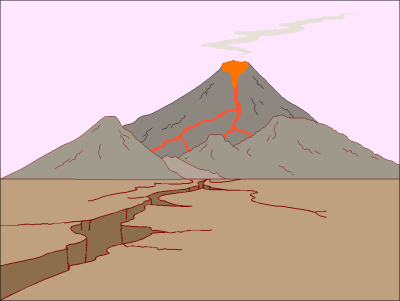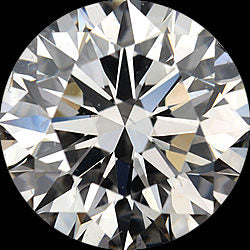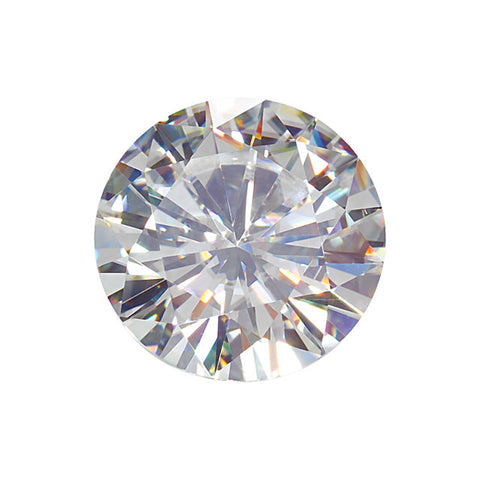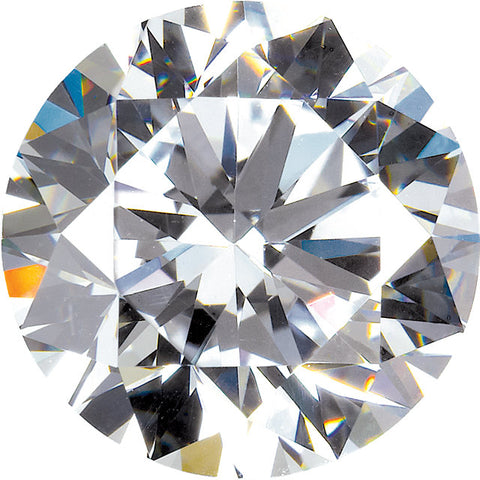Diamonds: Genuine, Synthetic, Imitation...a Primer
Posted by Joanna Rubini on
Diamonds are carbon: very organized and stable carbon, that is. A very scientific description can be found here but simplified vastly, natural diamonds were created when carbon dioxide got trapped far below the earth's surface millions of years ago, was subjected to massive pressure from all the earth above it, was then forced at a high speed back up to the surface  via volatile volcanic action which prevented the natural conversion of carbon dioxide into graphite and instead produced a very stable strong carbon compound aka diamond, or so the theory goes.
via volatile volcanic action which prevented the natural conversion of carbon dioxide into graphite and instead produced a very stable strong carbon compound aka diamond, or so the theory goes.
With synthetic diamonds AKA lab grown diamonds, that process is simulated in a controlled  environment and accomplished in as little as just 2 days to produce rough material. There is much more control of color and clarity in a sterile environment than in nature.
environment and accomplished in as little as just 2 days to produce rough material. There is much more control of color and clarity in a sterile environment than in nature.
Diamonds- synthetic or natural, is the hardest known material on earth. It has been used in cutting and conductivity applications for years. In addition to its toughness, some material is beautiful when cut in the hands of a skilled craftsman.
Another diamond simulant, known as Moissanite, exists that out-rainbows diamonds. It actually conducts electricity similarly to diamonds and thus fools a regular diamond tester,  but its makeup is silicone carbide- same as meteorite, different from diamond. It is a viable alternative to diamonds with a hardness similar to that of corundum (as in sapphires and rubies) with a price tag that is not cheap but well below both natural diamonds and synthetic diamonds. Moissanite: the same composition as silicone carbide which is used in a myriad of drilling applications, is a relatively tough stone that can be abraded just as ruby and sapphire when worn daily, that has a slightly higher refractive index than diamonds (the rainbow-sparkle factor), and is available for less to far less cost in the bigger gems than diamond.
but its makeup is silicone carbide- same as meteorite, different from diamond. It is a viable alternative to diamonds with a hardness similar to that of corundum (as in sapphires and rubies) with a price tag that is not cheap but well below both natural diamonds and synthetic diamonds. Moissanite: the same composition as silicone carbide which is used in a myriad of drilling applications, is a relatively tough stone that can be abraded just as ruby and sapphire when worn daily, that has a slightly higher refractive index than diamonds (the rainbow-sparkle factor), and is available for less to far less cost in the bigger gems than diamond.
Cubic zirconia is another imitation diamond. It is made by melting minerals zirconium and zirconium dioxide powder into crystals. They produce a brilliant stable crystal that is nearly as  brilliant as diamond but is well softer in hardness. The only material that can scratch a diamond is diamond. CZs can easily be scratched with sand paper. In summary: CZs are beautiful, but not very durable in the long run. They are beautiful, inexpensive to produce, have a low price tag, and are not very durable. They are not considered an investment but rather their purchase is more of a inexpensive sparkly whim.
brilliant as diamond but is well softer in hardness. The only material that can scratch a diamond is diamond. CZs can easily be scratched with sand paper. In summary: CZs are beautiful, but not very durable in the long run. They are beautiful, inexpensive to produce, have a low price tag, and are not very durable. They are not considered an investment but rather their purchase is more of a inexpensive sparkly whim.
SO WHAT SHOULD YOU CHOOSE? Tune in to my next blog post!
Share this post
- Tags: Diamonds
